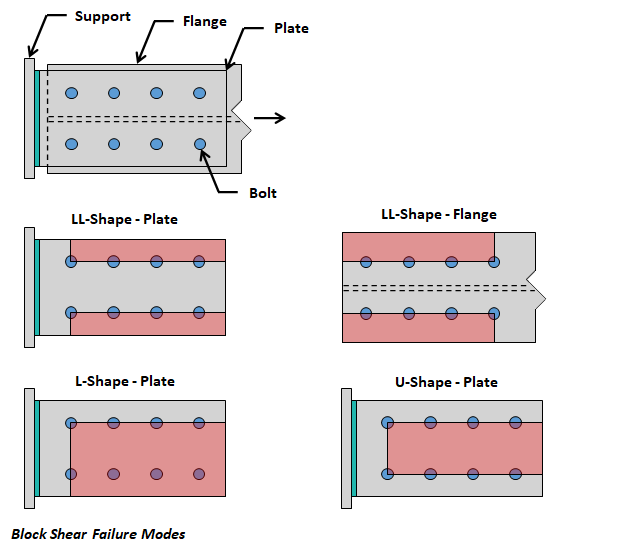A Bolted Flange Plate connection consists of two steel plates that are welded to the support and bolted to the flanges of the beam to resist moment. VAConnect assumes that the Bolted Flange Plate connections possess sufficient rigidity to maintain the angles between the connected members and behave as fully restrained moment connections as discussed in the AISC Steel Construction Manual Part 12. While various simple shear connections can be used in conjunction with bolted flange plates, VAConnect uses a shear tab to resist the applied shear loads.
Bolted Flange Plate connections are checked per the AISC 360-22 design specification. Bolts are used to connect the flange plates to the flanges of the beam. VAConnect requires that the same Bolted Flange Plate connection be made at the top and bottom flange of the beam (i.e. the connection will be symmetrical about the centerline of the beam). VAConnect allows the flange plates to be connected to the support with either a double sided fillet weld or a complete-joint-penetration groove weld. The capacity of the complete-joint-penetration groove welds are not checked since the strength of the joint is controlled by the base metal according to AISC 360-22 Table J2.5. The length of the weld at the support can be manually set to a value less than the width of the flange plate, which is needed for cases when the flange plate is wider than the support.
Shear is transferred from the web of the beam to the support through the shear tab connection. Since the angle between the beam and the support in a fully restrained moment connection remains unchanged under loading, eccentricity is neglected when checking limit states pertaining to the shear tab.3 To satisfy equilibrium, the moment from the eccentric shear force (eccentricity · Fv) is added to the moment applied to the connection (Mz). The axial force is assumed to be distributed uniformly to the flanges of the beams (the shear tab connection is therefore assumed to have negligible axial stiffness compared to the flange plate connections). The moment at the connection is resolved into an effective tension-compression couple acting as axial forces at the beam flanges. Finally, the forces in the flanges plates can be calculated as R = (Mz + eccentricity · Fv) / d ± Fa/2.
VAConnect checks the following limit states for Bolted Flange Plates (refer to the program’s detailed reports for specific code references):
The figure below shows the possible block shear failure methods that VAConnect checks at the plate-to-flange connection.
